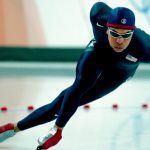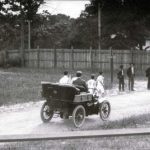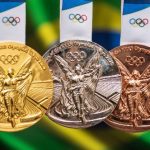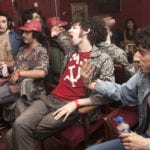 Humans
Humans  Humans
Humans  Gaming
Gaming 10 Overused Game Villains
 Mysteries
Mysteries Ten Mysterious “Ghost Ship” Stories That Still Keep Us Wondering
 Technology
Technology 10 Times AI Replaced Humans (and No One Noticed)
 Politics
Politics 10 Dreaded Despots Who Met Untimely Deaths
 Pop Culture
Pop Culture 10 Celebs Who Have Surprisingly Wanted to Be on Reality TV
 Creepy
Creepy 10 of the Strangest Popular Creepypastas
 Animals
Animals 10 Animals That Used to Be Bigger
 Our World
Our World 10 American Cities, Towns & Villages That Are Unlike Any Other
 Movies and TV
Movies and TV 10 Huge Movies Almost Made by Other Directors
 Humans
Humans 10 Real Life Versions of Famous Superheroes
 Gaming
Gaming 10 Overused Game Villains
 Mysteries
Mysteries Ten Mysterious “Ghost Ship” Stories That Still Keep Us Wondering
Who's Behind Listverse?

Jamie Frater
Head Editor
Jamie founded Listverse due to an insatiable desire to share fascinating, obscure, and bizarre facts. He has been a guest speaker on numerous national radio and television stations and is a five time published author.
More About Us Technology
Technology 10 Times AI Replaced Humans (and No One Noticed)
 Politics
Politics 10 Dreaded Despots Who Met Untimely Deaths
 Pop Culture
Pop Culture 10 Celebs Who Have Surprisingly Wanted to Be on Reality TV
 Creepy
Creepy 10 of the Strangest Popular Creepypastas
 Animals
Animals 10 Animals That Used to Be Bigger
 Our World
Our World 10 American Cities, Towns & Villages That Are Unlike Any Other
 Movies and TV
Movies and TV 10 Huge Movies Almost Made by Other Directors
10 Controversial Decisions in Olympic History
The Olympic Games, a grand stage where athletic prowess meets the spirit of international competition, have not been without their share of controversies. Over the years, decisions made within this arena have sparked debates, altered careers, and even impacted international relations. From the geopolitical tensions that led to widespread boycotts to individual scandals shaking the very foundations of sportsmanship, these moments have been etched into the annals of Olympic history.
They serve as reminders of the complexities and pressures that come with the world’s foremost sporting event. Each controversy, whether rooted in politics, ethics, or human error, has contributed to the evolving narrative of the Olympics, challenging our perceptions of fairness and integrity in sports. These instances, while contentious, have often led to significant changes in policies and practices, shaping the future of the Olympic Games.
Related: Top 10 Rarest Feats In Sports
10 Pairs Figure Skating (2002)
The 2002 Winter Olympics in Salt Lake City witnessed a significant figure skating scandal involving Canadian pair Jamie Salé and David Pelletier and Russian pair Elena Berezhnaya and Anton Sikharulidze. This controversy, known as “Skategate,” led to both pairs receiving gold medals and sparked a major overhaul in the sport’s judging system.
The competition was intense, with both pairs delivering solid performances. However, the scoring system, which was subjective and had been criticized for years, played a crucial role in the unfolding drama. The Canadians, despite a seemingly flawless performance, initially received silver, while the Russians were awarded gold. This decision was met with widespread disbelief and accusations of unfair judging.
The controversy intensified when French judge Marie-Reine Le Gougne admitted to being pressured to favor the Russian pair, a claim she later retracted. The scandal drew international attention, leading to investigations by federal authorities in the U.S. and Europe. Allegations of corruption and mafia interference emerged, further complicating the situation. In response to the outcry, the International Skating Union (ISU) decided to award gold medals to both pairs.
This decision, while resolving the immediate controversy, highlighted the deep flaws in the figure skating judging system. As a result, the system was completely overhauled, moving toward a more objective and transparent scoring method. The scandal had lasting impacts on the sport, changing the way figure skating competitions were judged and perceived. It also left a mark on the athletes involved, who were caught in the midst of a geopolitical and sporting controversy that went far beyond their control on the ice.[1]
9 Marathon Cheating Scandal (1904)
The 1904 Olympic marathon in St. Louis stands out as one of the most bizarre events in Olympic history. The marathon, part of America’s first Olympics, was held in conjunction with the World’s Fair, which celebrated the Louisiana Purchase centennial and showcased American imperialism. The event was marked by a chaotic and almost farcical series of incidents, overshadowing the genuine achievements of athletes like gymnast George Eyser.
The marathon itself was a peculiar affair, featuring a mix of seasoned marathoners and an assortment of unusual participants, including ten inexperienced Greek runners, two barefoot South African tribesmen, and a Cuban mailman named Félix Carbajal. Carbajal, who had journeyed to the States after fundraising in Cuba, arrived at the starting line in street clothes, which were later modified by a fellow Olympian.
The race commenced in extreme heat and humidity, with a challenging 24.85-mile (40-kilometer) course that included hills, rough terrain, and minimal water availability, as the chief organizer, James Sullivan, wanted to test the effects of dehydration. The conditions led to numerous incidents. William Garcia nearly died from internal injuries caused by dust, John Lordon suffered from vomiting, Len Tau was chased off course by dogs, and Carbajal stopped to eat rotten apples, causing him to take a nap mid-race.
American runner Fred Lorz, who led early on, hitched a ride in a car for 11 miles (17.7 kilometers) after suffering cramps. Thomas Hicks, another American, was given a mixture of strychnine and egg whites by his support team in the first recorded instance of performance-enhancing drug use in the modern Olympics. Despite his weakened state, Hicks was declared the winner after Lorz was disqualified for his car ride.
The 1904 Olympic marathon was not only a test of endurance but also a bizarre spectacle that highlighted the rudimentary and often dangerous conditions of early 20th-century sports events. [2]
8 Chinese Gymnasts Age Controversy (2008)
The Chinese gymnast age controversy during the 2008 Beijing Olympics brought to the forefront a significant issue in the world of competitive gymnastics: the age of athletes. The rules set by the International Gymnastics Federation (FIG) require that gymnasts must turn 16 in the year of the Olympics to be eligible to compete. However, allegations surfaced that some members of the Chinese women’s gymnastics team might have been underage, potentially as young as 14.
The controversy began when online records and reports suggested discrepancies in the ages of certain gymnasts on the Chinese team. This sparked an international debate and a thorough investigation by the International Olympic Committee (IOC) and FIG. The Chinese team, which had performed exceptionally well, winning several medals, including the prestigious team gold, found themselves under intense scrutiny.
The Chinese officials consistently denied the allegations, asserting that their athletes met the age requirements, and provided passports as proof. After an investigation, the IOC and FIG ultimately cleared the Chinese team of any wrongdoing, citing that the documentation provided was sufficient to confirm the gymnasts’ eligibility.
Despite the clearance, the controversy left a lasting impact on the sport. It raised serious questions about the enforcement of age regulations in gymnastics and the potential advantages of having younger, more flexible, and often less fearful athletes competing at the highest level.
The incident led to increased calls for more stringent and effective methods of age verification in international gymnastics competitions. The controversy also sparked discussions about the ethical implications of pushing young athletes into intense training and competition and the responsibilities of international sports bodies to protect their well-being.[3]
7 Jim Thorpe’s Stripped Medals (1912)
Jim Thorpe, an American athlete born in Oklahoma in 1887, is remembered as a unique and versatile sports figure. Despite a challenging childhood marked by personal losses, Thorpe excelled in various sports, including football, baseball, lacrosse, and track and field, during his college years at Carlisle. Thorpe’s most notable achievements came in the 1912 Olympics in Sweden, where he won gold medals in both the pentathlon and decathlon.
Thorpe’s performance in these events was so dominant that he set an Olympic record in the decathlon that stood for nearly two decades. However, it was revealed that Thorpe had played minor league baseball for money before the Olympics, violating the amateurism rules of the time. As a result, the Amateur Athletic Union stripped him of his amateur status, and the International Olympic Committee subsequently revoked his Olympic medals and records.
Despite this setback, Thorpe continued to excel in professional sports, playing in Major League Baseball and the American Professional Football Association, which later became the NFL. He also dabbled in basketball and hockey and worked in the movie industry. In 1982, the IOC awarded replica gold medals to Thorpe’s family, but it wasn’t until 2022 that Thorpe’s Olympic victories were officially reinstated.
This decision came after the Norwegian and Swedish Olympic Committees agreed to return the titles to Thorpe, acknowledging that their athletes never considered themselves the rightful winners of the pentathlon and decathlon. Thorpe’s legacy concludes with a rightful restoration of his Olympic triumphs, honoring him as one of the greatest athletes in history.[4]
6 Munich Massacre (1972)
On September 5, 1972, eight armed members of the Palestinian group Black September infiltrated the Olympic Village in Munich, Germany. They entered the apartments housing the Israeli team, leading to a hostage situation. Israeli wrestling referee Yossef Gutfreund first encountered the intruders, and his alert allowed two athletes to escape while eight others hid. However, weightlifter Joseph Romano and wrestling coach Moshe Weinberg were killed during the initial assault.
The terrorists, led by Luttif Afif, held nine hostages and demanded the release of 234 Palestinians jailed in Israel and two in Germany. Israel’s response was a firm refusal to negotiate. The Munich police chief and others attempted negotiations, which ultimately failed. The terrorists then demanded transportation to Cairo, leading to a planned ambush by the authorities at the Fürstenfeldbruck airbase.
The rescue attempt at the airbase was disastrously executed. The German snipers, unprepared and lacking proper equipment, faced eight terrorists instead of the expected five. The situation escalated, leading to a shootout. The hostages, bound inside the helicopters, were unable to escape. By the end of the ordeal, all nine hostages were killed, along with a German policeman. Five of the terrorists were killed, and three were captured. Initial reports falsely claimed that the hostages had survived, but the grim reality soon became apparent.
This event marked a dark chapter in Olympic history, highlighting the vulnerability of international events to political violence and the challenges of counter-terrorism efforts.[5]
5 Russian Doping Scandal (2012 and beyond)
The roots of the scandal trace back to at least 2012 when a German network, ARD, released a documentary alleging a state-sponsored doping program existed within Russia’s sports governing body. This led to an investigation by the World Anti-Doping Agency (WADA), which in 2015 released a 300-page report detailing a “deeply rooted culture of cheating” in Russian sports.
The report implicated athletes, coaches, trainers, doctors, and some Russian institutions in the doping scheme. One of the most shocking revelations was the involvement of Russia’s Secret Service in the 2014 Sochi Olympics, where they reportedly impersonated lab engineers and intimidated lab workers to cover up positive drug test results. Athletes used alternate identities to avoid testing, and sports officials submitted false samples for competitors who were doping.
As a result of these findings, WADA imposed several sanctions on Russia, including a ban from competing in international sporting events under the Russian flag, restrictions on uniforms containing Russian symbols, and a ban on Russian government officials attending international sporting events. The Court of Arbitration for Sport upheld these sanctions in 2020 but reduced the duration from four to two years.
At the 2022 Beijing Olympics, Russian athletes competed as a neutral party, representing the Russian Olympic Committee, similar to their participation in the Tokyo Olympics and the 2018 Pyeongchang Olympics as “Olympic Athletes from Russia.” This ongoing scandal has not only tarnished Russia’s reputation in international sports but also raised serious questions about the integrity of competitive sports and the effectiveness of global anti-doping efforts.[6]
4 Roy Jones Jr. Boxing Match (1988)
At the 1988 Seoul Olympics, American boxer Roy Jones Jr. experienced a devastating loss in the light-middleweight division gold medal match, a moment that is remembered as one of the most controversial in Olympic history. Jones, then a promising 19-year-old, had advanced to the final with relative ease, including a unanimous decision victory in the semifinal against British fighter Richie Woodhall.
In the gold medal match, Jones faced South Korean boxer Park Si-hun. Despite Jones dominating the fight, landing 86 punches to Park’s 32 and causing Park to receive two standing eight-counts and two warnings from the referee, the judges awarded the match to Park in a 3-2 split decision. This decision was met with disbelief and controversy, as even the NBC punch recorder showed Jones as the clear winner.
The aftermath of the fight revealed allegations of corruption and bribery within the boxing events at the Seoul Olympics. The three judges who scored the fight in favor of Park were suspended for six months pending an investigation but were eventually cleared of wrongdoing by the International Boxing Association (AIBA). Years later, evidence suggested that Korean boxing authorities had bribed the judges, with corruption extending into the AIBA’s executive ranks. Despite these revelations, the International Olympic Committee concluded in 1997 that there was no evidence of corruption.
Jones never received the gold medal he arguably deserved. Following this controversial match, Jones went on to become one of the best pound-for-pound fighters of the 1990s. Park, on the other hand, retired from boxing after the Seoul Olympics and never turned professional. He later became a high school teacher and a boxing coach. The incident remains a significant blemish on Olympic boxing history, emphasizing the potential for corruption and the impact it can have on athletes’ careers.[7]
3 Nancy Kerrigan and Tonya Harding (1994)
In early 1994, the figure skating community was rocked by an attack on renowned figure skater Nancy Kerrigan. Just before the U.S. Championships, an attacker struck her knee. On January 6, 1994, Shane Stant, hired by Jeff Gillooly, skater Tonya Harding’s ex-husband, and Harding’s bodyguard, Shawn Eckhardt, assaulted Kerrigan. The motive was to eliminate Kerrigan as a competitor for the Olympic team.
Harding, Kerrigan’s long-time rival, was indirectly involved in the attack’s planning. Initially, she denied any involvement but acknowledged in 2018 that she knew something was being planned. The attack happened after a practice session at the Cobo Arena in Detroit, resulting in a severely bruised right leg for Kerrigan, leading her to withdraw from the national championships.
However, Kerrigan recovered and secured a spot in the Winter Olympics. In contrast, Harding won gold at the 1994 U.S. Figure Skating Championships. The truth about the attack came out when Eckardt confessed to the FBI, implicating Gillooly and Stant. Gillooly later admitted to the FBI that he masterminded the assault, also implicating Harding.
The scandal peaked during the Winter Olympics, where both Harding and Kerrigan competed. Harding finished eighth due to a skate lace issue, while Kerrigan won the silver medal. Following the Olympics, Harding pleaded guilty to conspiracy to hinder prosecution and received three years of probation and a $160,000 fine. Additionally, she was banned from the USFSA and stripped of her 1994 national championship title. The other conspirators served jail time, putting a dramatic end to one of sports history’s most infamous scandals.[8]
2 Ben Johnson’s Disqualification (1988)
Ben Johnson, a former 100-meter sprinter, is known for his infamous race at the 1988 Seoul Olympics. Representing Canada, Johnson astounded the world by winning the 100-meter final and setting a new world record of 9.79 seconds. However, his victory was short-lived as he tested positive for the banned steroid stanozolol, leading to his disqualification and the loss of his medal.
This race, often dubbed the “dirtiest race in history,” had six out of the eight finalists linked to drug use during their careers, including notable athletes like Carl Lewis and Linford Christie. The prevalent doping in the sport during this era mirrored a relaxed attitude toward drug use in athletics.
Johnson’s journey began as a Jamaican immigrant in Canada, where he met his coach, Charlie Francis. Francis introduced Johnson to steroids in 1981, believing it was the only way to compete in a sport plagued by drug use. Johnson’s physical transformation and subsequent success on the track, highlighted by a bronze medal at the 1984 Los Angeles Olympics, were significant. However, his involvement in doping tarnished his career.
It was not until the late 1990s, after the Festina doping scandal in cycling, that significant steps were taken to address doping in sports. This led to the formation of the World Anti-Doping Agency.
Despite his fall from grace and an unsuccessful comeback attempt, Johnson remains a contentious figure in the world of athletics. He asserts that his training regimen, not just drug use, contributed to his success and argues that he was unfairly singled out while others who used performance-enhancing drugs were protected. Today, Johnson coaches aspiring soccer stars, still contending with the repercussions of his actions.[9]
1 1980 and 1984 Boycotts
On March 21, 1980, President Jimmy Carter declared that the United States would boycott the Moscow Summer Olympics as a response to the Soviet Union’s invasion of Afghanistan on December 24, 1979. This boycott, which also included measures like a grain embargo, was initially supported by Britain and Australia. However, they eventually participated in the Games.
The boycott did little to influence the Soviet Union’s actions in Afghanistan. Soviet troops remained in Afghanistan until 1988, beginning their withdrawal under the leadership of Mikhail Gorbachev. In the U.S., a group of athletes attempted to legally challenge the government’s decision, seeking the right to compete, but their efforts were unsuccessful.
On the 40th anniversary of the Moscow Games, July 19, 2020, Sarah Hirshland, the CEO of the U.S. Olympic and Paralympic Committee, acknowledged the boycott’s ineffectiveness in a Tweet to the affected athletes. She expressed that the decision not to send a team to Moscow didn’t influence the global politics of that time. Instead, it unjustly harmed the American athletes who had committed themselves to representing their country. She concluded that these athletes deserved better.
In retaliation for the U.S. boycott of the 1980 Moscow Olympics, the Soviet Union opted to skip the 1984 Summer Olympics in Los Angeles. This decision was officially announced on May 8, 1984, a few months before the commencement of the Games. The Soviet government’s statement criticized the American administration for allegedly politicizing the Olympics and fostering an environment of “chauvinistic sentiments and anti-Soviet hysteria.”
Citing concerns for the safety of their athletes amid potential anti-Soviet protests, the Soviet Union justified its absence from the Los Angeles Games. The Reagan administration in the U.S. condemned the Soviet Union’s decision as a purely political move without any substantial basis. Following the Soviet Union’s lead, thirteen other communist countries also declared their intention to boycott the Los Angeles Olympics, echoing similar reasons.
In place of the Olympics, these nations organized an alternative sporting event, known as the Friendship Games, during the summer of 1984.[10]








